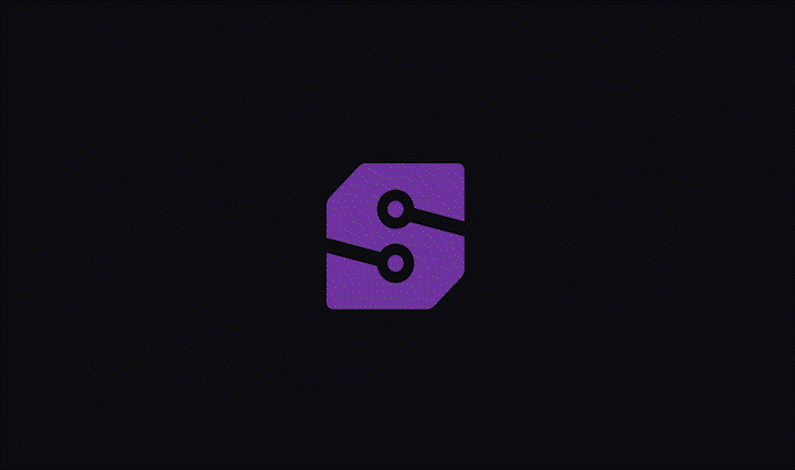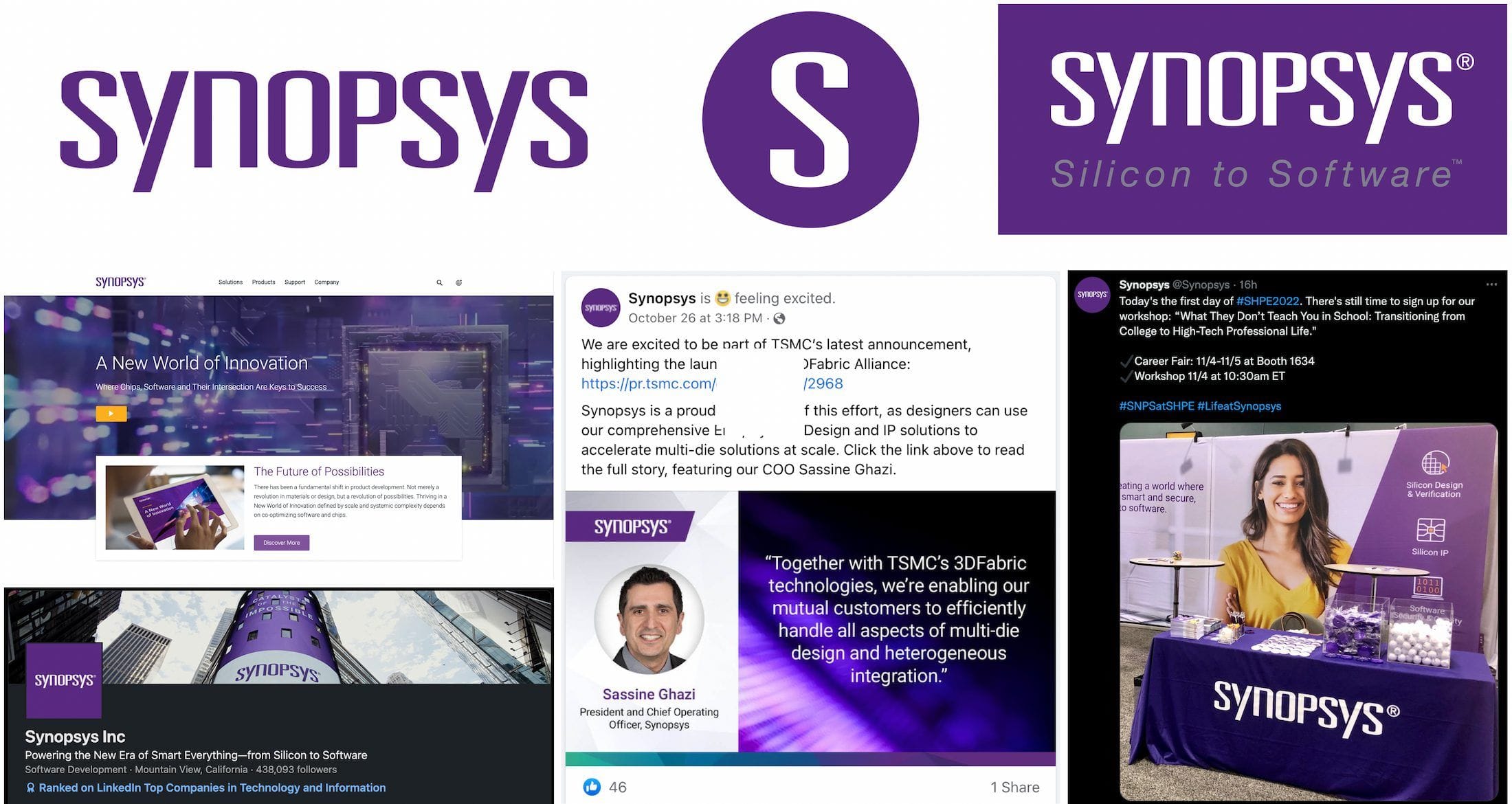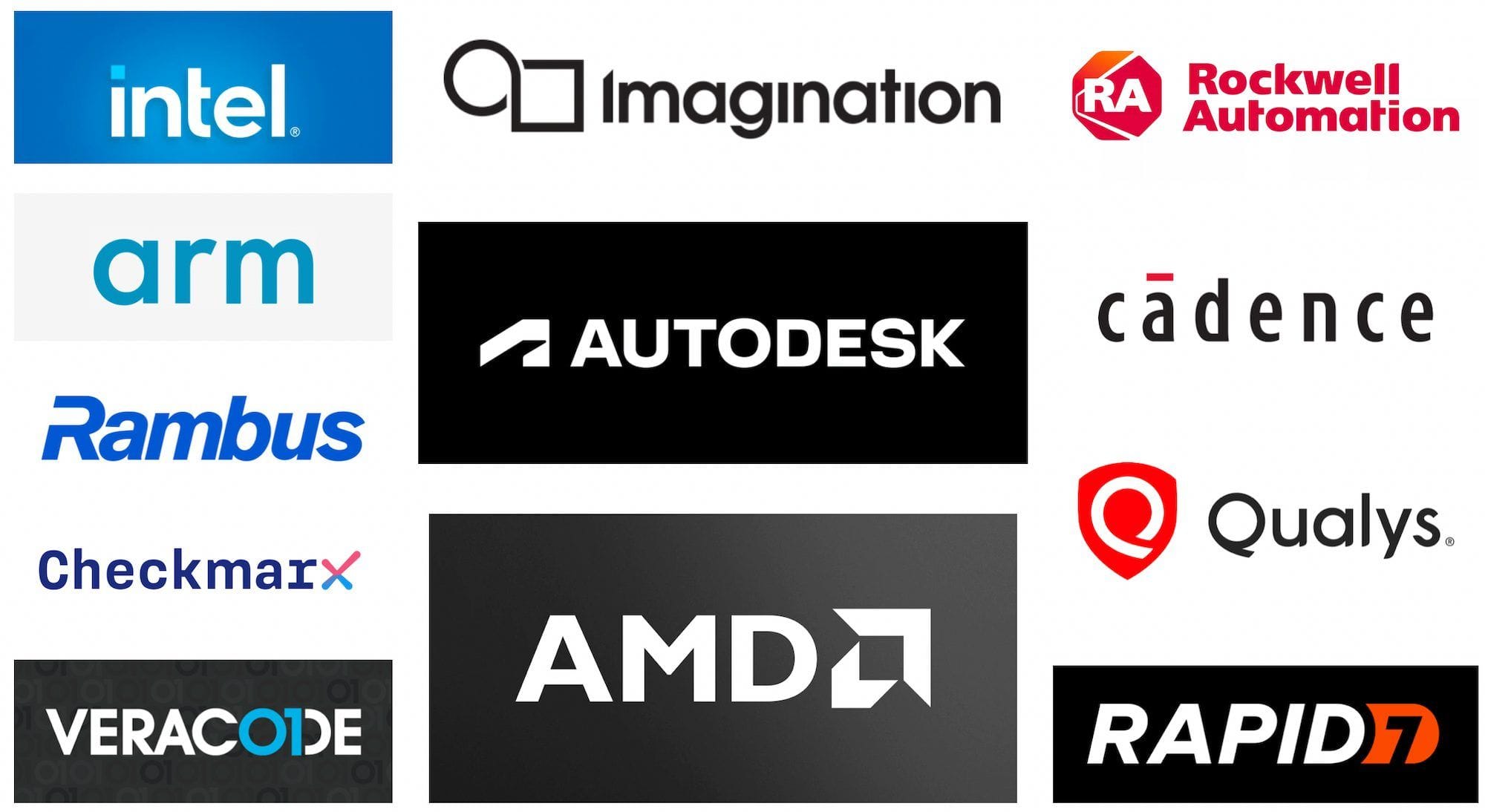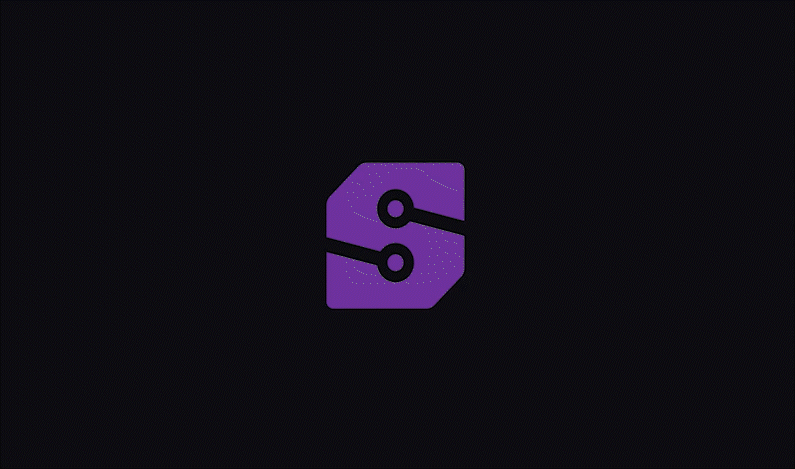Synopsys
A rebrand to position Synopsys as a leader of innovation, strengthen trust in the brand, and reestablish brand loyalty as purchasing power shifts to Gen-Z consumers.

MY ROLE
Brand Designer
TIMELINE
1 month
WHO IS SYNOPSYS?
Synopsys is a leading provider of electronic design automation (EDA) software and services. Its portfolio comprises silicon IP (interface, foundation, and physical IP), silicon design and verification (EDA automation solutions and services), and application security.
CONTEXT
In this project, I propose a new brand identity for the tech giant, Synopsys, which pivots to reposition the company as a leader of innovation, strengthen trust in the brand, and reestablish brand loyalty as purchasing power shifts to Gen-Z consumers.
Disclaimer: This project is a conceptual work (completed as a design exercise and personal exploration).
Assessing the Market
Understanding Synopsys' surrounding context
The first step in the rebranding process was a deep dive into the brand and EDA market, with the goal of contextualizing Synopsys and identifying areas for improvement. For a corporate brand like Synopsys, this task entailed defining the business model, researching the EDA market, and synthesizing findings into a SWOT analysis of the brand.

Defining Synopsys' business model
SWOT Analysis
I then conducted a SWOT analysis, which highlighted Synopsys' market leadership, strong geographic presence, and profitability as key strengths. However, challenges like employee turnover and declining per-unit revenue impacted efficiency. Opportunities in local partnerships and shifting customer preferences, along with threats from competition and market saturation, emphasized the need for adaptability in its brand and market strategy.

SWOT analysis of Synopsys
Evaluating the Brand
Brand Evaluation
After gaining some insight into the context surrounding Synopsys, I conducted a series of audits of the brand itself to define Synopsys' position in the current architecture. This research involved defining the brand architecture and conducting both a brand and competitor audit.

Brand architecture graphic

Brand & online presence audit
Competitor Benchmarking
Lastly, I audited competitors in the tech industry, with a focus on other EDA providers, to gather insights into industry trends and potential differentiators. The competitor audit revealed key trends in branding across industry players, including:
Color Schemes: Color schemes prominently feature blue and white, black and white, and orange/red with black and white combinations.
Typography: Typography is dominated by chunky, sans-serif fonts, evoking a "tech" or futuristic aesthetic.
Logo Design: Logos are typically wordmarks or combination marks, often rectangular or modular in shape. Minimal and abstract logomarks are common, incorporating elements like shields, basic shapes, or numbers for a clean and modern look.

Redefining the Brand
I researched how people saw Synopsys at the time of the rebrand...
Using a variety of sources online (employee reviewing sites, Google reviews, workplace Q&A sites, etc), I created a list of internal and external brand perceptions. These insights played a key role in identifying key pain points & weighing the brand equity at stake (and thus what could and could not be changed in the rebrand).

Assessment of internal brand preception

Summary of external brand preception
And defined 3 rebrand objectives based on the market audit and brand perception research.
Color Schemes: Color schemes prominently feature blue and white, black and white, and orange/red with black and white combinations.
Typography: Typography is dominated by chunky, sans-serif fonts, evoking a "tech" or futuristic aesthetic.
Logo Design: Logos are typically wordmarks or combination marks, often rectangular or modular in shape. Minimal and abstract logomarks are common, incorporating elements like shields, basic shapes, or numbers for a clean and modern look.
And defined 3 rebrand objectives based on the market audit and brand perception research.
Maintain brand equity (and customer loyalty/trust)
Distinguish Synopsys visually from competitors
Rebrand to create desired brand perceptions
Brand Personality
Following the brand assessment, the brand was redefined under three new brand drivers, strategically curated to achieve the rebrand goals:
Ambitious: The Synopsys brand doesn’t just strive to create new solutions—it aims to create the best solutions. It doesn’t just want to be a part of this new era of tech; it wants to lead it, positioning itself as the topmost innovator of its time.
Innovative: The Synopsys brand reflects the fundamental purpose of its work—innovation. As pioneers of the future, bringing about some of the most revolutionary advances in the history of humankind, Synopsys reflects this forward-focused mindset and commitment to go places previously unimaginable.
Customer-Oriented: The Synopsys brand mirrors the nature of its services, which are tailored to each customer’s unique needs, as well as the salient company culture, centered around creating the best possible solutions and products for clients.
Trustworthy: Especially with the modern stereotypes of new tech, Synopsys strives for a trustworthy brand image—reflecting not only their ability to reliably deliver quality products/solutions but also their commitment to privacy and security.
Reimagining the Brand Part 1: Visual Identity
Updating Synopsys' look while maintaining brand equity
The identity reintroduces Synopsys as an innovator rather than a tech company, moving the branding away from traditional "old tech" associations (outdated, untrustworthy, cryptic) towards ideas of progress and innovation, to better connect to the changing market.
Visual Research
I looked into various symbols online to better understand the visual language of tech-oriented products/services. Additionally, I conducted an audit of Synopsys' internal documents, searching for themes, motifs, and/or colors that could be used in the rebrand, so as not to completely change the company image and isolate existing customers.

From left to right: themes and iconography, synopsys logos, synopsys collateral
Color Palette
The new identity introduces an expanded color palette that retains the brand’s original violet while providing secondary colors that modernize the brand and allow for more diverse and engaging applications. The new visual identity preserves brand equity by maintaining key brand associations (for example, violet remains the primary brand color) and pulling inspiration for the redesigned elements from existing brand materials (for example, secondary colors were sampled from the Synopsys Spring 2022 Corporate Backgrounder).

Refreshed brand color palette
Typography
The new brand typography is minimalistic and sharp, modernizing the brand and achieving a clean technologic feel while avoiding any isolating, overly-techy /cryptic associations.

New brand typography
Reimagining the Brand Part 2: Logo Design
The Logo: From Paper to Screen
The process of logo design began with a series of 50 thumbnail sketches aimed at capturing ideas for the logo composition, content, and style. From there, a collection of tight compositions were sketched, refining and further developing the initial ideas from the thumbnail stage.
The three strongest compositions were then pulled into Adobe Illustrator for digital rendering, and a single logo was eventually selected, refined, and finalized.

Tight Compositions

Initial Digital Compositions

Refined Digital Compositions (Combining two ideas)


Before & Afters of the Wordmark & Tagline

The resulting logomark redesign allows for custom applications across a variety of Synopsys divisions.
The Rebrand in Action





